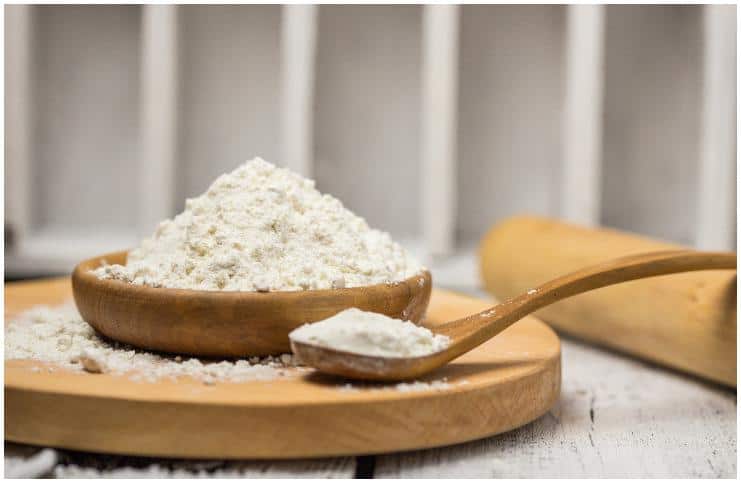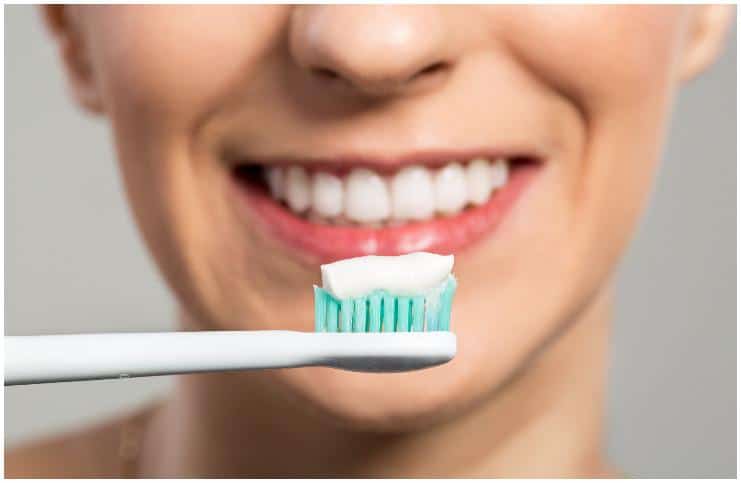What are the side effects of Tricalcium Phosphate (E341)?
Calcium is an essential mineral for optimal bone health throughout your life. Actually, it has been recognized as the most abundant mineral which is available in our human body.
99% of this mineral can be found in the teeth and bones. The other 1% percent plays a vital role in other bodily functions, such as muscle function and nerve transmission.
What Is Tribasic Calcium Phosphate?
Tricalcium phosphate (TCP), also known as tribasic calcium phosphate or E341, is a calcium salt of phosphoric acid produced through chemical synthesis.
Chemical formula
Ca3(PO4)2
Uses of E341
It is used as a food additive with E number – E341. According to the FDA, it is considered – GRAS (generally recognized as safe). The daily limit of TCP is recommended to be 70mg.
E341 is used in the manufacture of phosphate compounds, fertilizers, dental and polishing powders (however, brushing the teeth with E341 is not as effective as with fluoride), milk glass, pottery, porcelains, enameling.
Baby Powder & Toothpaste
It is used in powdered spices as an anti-caking agent and is also found in toothpaste and baby powder.
In addition, it is used as an antacid, dietary supplement, stabilizer in plastics, and in medical applications as a calcium replenisher. You may find this chemical in foods, like – wine, dairy products, powdered spices, carbonated beverages, jams, and candies.
Is It Vegan?
It is mainly produced from animal bones, hence no.
Is It Gluten-Free?
Yes.
Dangers And Side Effects Of Tricalcium Phosphate
Possible dangers of ingesting this chemical include:
- if ingested – digestive disturbances, severe abdominal pain, vomiting, nausea, decreased appetite, dry mouth, constipation, convulsions, increased thirst and urination, and occasionally vomiting of blood.
- if inhaled – eye irritation, pneumoconiosis, or respiratory irritation.
You should check with your healthcare specialist immediately if any of these adverse effects occur.
The possibility of consuming too much calcium from food happens occasionally, especially if supplementing. Furthermore, using this supplement causes higher levels of calcium in the blood, a condition called hypercalcemia.
This condition may lead to impairment of kidney function which then has other adverse effects, such as – increased absorption of zinc, iron, phosphate, and magnesium.
This supplement may also lower the accumulation of lactic acid in muscles which is a natural defense mechanism for the body during extreme exertion. More importantly, lactic acid is an important energy source for your body both during and after your physical exercise session.
Additionally, this compound can make it harder for your body to absorb certain prescription medicines. Furthermore, calcium oxalate stones are the most frequent type of kidney stones.
Hypercalcemia is thought to contribute to the development of kidney stones. Lastly, in a 2016 study, patients who took this type of supplement had higher chances to have calcification in their arteries.
Cancer
There isn’t any type of cancer reported by people who intake this supplement.
Healthy Calcium Sources
Milk has long been claimed as the number 1 source of calcium by the dairy industry. However, many studies show that dairy products have little or no benefit for bones.
According to a study published in the American Journal of Epidemiology, eating dairy products, especially at age 20, was strongly connected to a higher risk of hip fracture in old age.
Observational cohort studies have also concluded that a higher intake of dairy products is associated with a higher risk for ovarian cancer. Furthermore, dairy products are linked to autoimmune diseases and type 1 diabetes – once known as juvenile diabetes – a condition in which the immune system destroys insulin-making cells in your pancreas.
Instead of consuming dairy products, try these sources of calcium:
- white beans;
- soybeans;
- red kidney beans;
- lentils;
- navy beans;
- kale;
- almonds;
- okra;
- spinach;
- broccoli;
- pak choi;
- mustard greens;
- carrots;
- dates;
- oranges;
- figs;
- artichokes;
- blackberries;
- chia seeds;
- sesame seeds.
READ MORE: Azodicarbonamide – Dangers & Side Effects
Six Tips For A Better Calcium Absorption
Caffeine
Avoid caffeine and foods containing caffeine, which are falsely assumed to be safe. Caffeine is a major culprit in bone diseases, because it may impair proper calcium absorption.
READ MORE: Sodium Metabisulfite (E223): Uses and Side Effects
Magnesium
Consume foods rich in magnesium because this mineral is essential to calcium absorption. Calcium and magnesium work in a very special relationship with each other in the body.
Furthermore, magnesium plays a vital structural role in bone formation and is important for nerve conduction, energy metabolism, immune function, muscle activity, and DNA degradation and synthesis.
Don’t Smoke
Smoking increases the loss of this mineral from the body, which may lead to a higher risk of fracture and lower bone density.
Spend Time Outside
The presence of vitamin D positively influences calcium’s absorption capabilities. The best natural source of vitamin D is sunlight, hence its name – the sunshine vitamin.
Depending on the individual’s skin tone, 5 to 15 minutes of sun exposure to the legs and arms or the face, hands, and arms can be sufficient to meet the body’s need for this vitamin.
READ MORE: Calcium Disodium EDTA: Uses and Adverse Effects
Potassium
Eat foods high in potassium which may neutralize the increased urinary loss of calcium due to excessive sodium in the typical western diet.
Stress
Reduce your stress levels – the best methods include – mindfulness meditation (a 40-minute session per day), Tai Chi, Yoga, moderate physical exercise (minimum 90 minutes of walking per day), and good sleeping habits (minimum 7 hours per day).
READ MORE: Citric Acid (E331) – Uses And Side Effects
Note
The WHO – World Health Organization recommends between 400 and 500 milligrams calcium daily, which is actually half of the recommended daily value in the United States.
Nevertheless, according to a 2005 study published in the Osteoporosis International Journal, a low intake of calcium was not linked with a notable increased risk of any fracture, hip fracture or osteoporotic fracture.
Tricalcium Phosphate vs Calcium Citrate (E333) – Differences
Calcium citrate is typically used as a food additive and to treat and prevent calcium deficiencies. It is the calcium salt of citric acid.
Note – if you have a parathyroid gland disorder or a history of kidney stones, you may not be able to take E333.
Regarding the supplementation, both these calcium supplements are useful, however, calcium citrate contains less elemental calcium per pill than other calcium supplements, therefore, you may require taking an increased dose.
READ THIS NEXT: Splenda Side Effects









Very informatively learned much from this.
This is another bad ingredient found in many cat/pet foods. It’s no wonder everyone has health problems given all the additives/chemicals/toxins in our food. It’s a big part of why our family switched to feeding an organic raw diet to our dogs & cats.